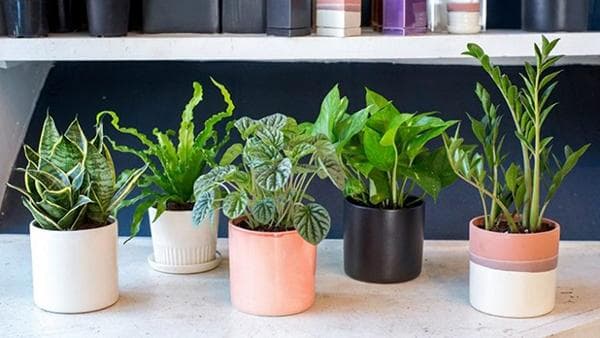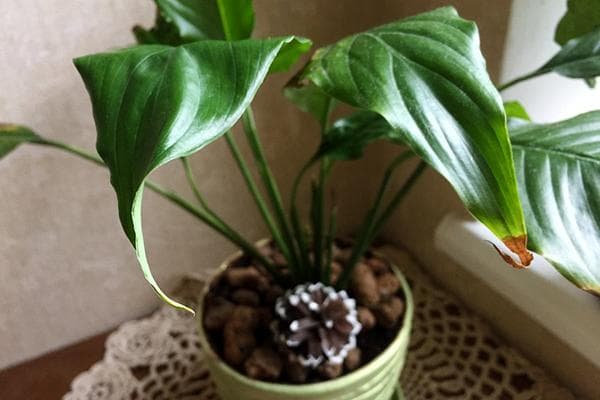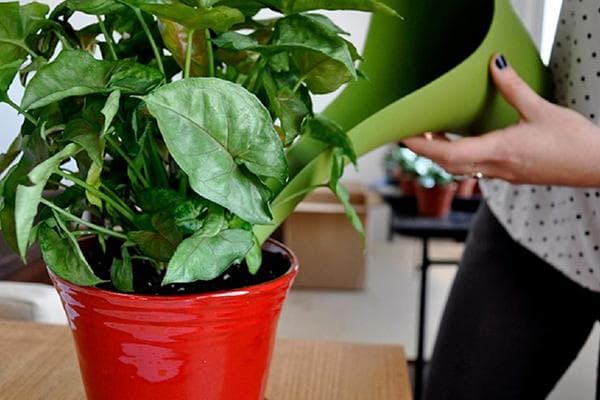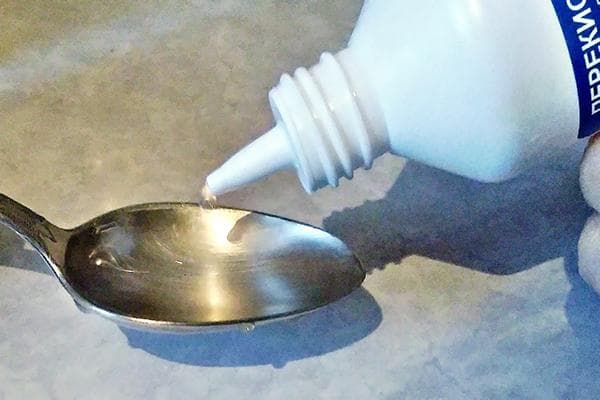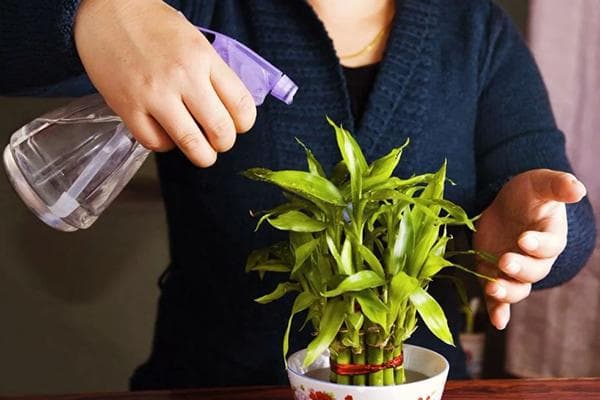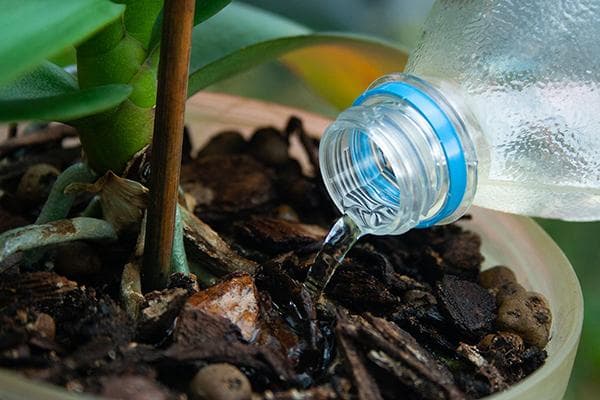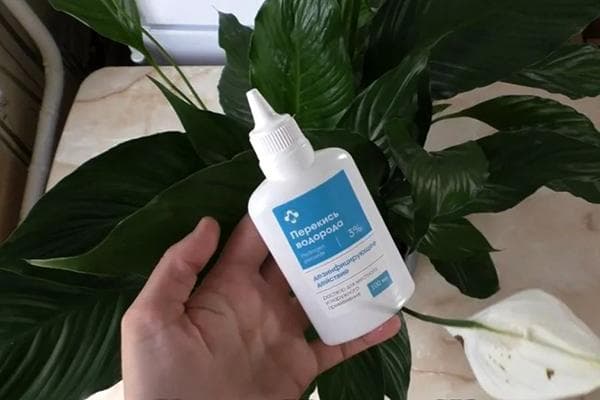Accelerating the growth of house plants using hydrogen peroxide?
Content:
The results of using hydrogen peroxide on indoor plants are shocking. Literally after a few hours, the turgor of the wrinkled leaves is restored. The rudiments, rolled into a tube, straighten out. This is a real “elixir of life”, which gives plants strength, youth, and encourages them to actively grow and bloom.
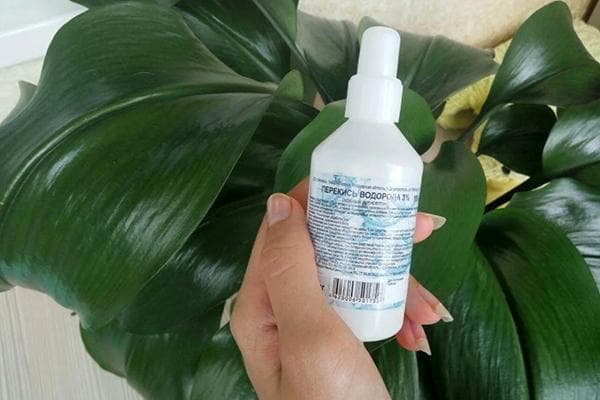
Hydrogen peroxide for plant growth
The pharmaceutical product is widely used in floriculture. This is a cheap alternative to growth stimulants. A bottle with 100 ml of liquid costs about 30 rubles.
Hydrogen peroxide is added to water for watering plants - but why?
In nature, hydrogen peroxide is part of melt and rain water. This type of nutrition is considered the most beneficial for plants. Unable to collect precipitation, flower growers enrich tap water in this way.
Effect
The result of using a peroxide solution is visible almost immediately: house plants come to life, as if after rain. They grow faster, bloom more profusely and generally feel great.
The formula of hydrogen peroxide differs from the formula of water only in the extra oxygen atom. Once in the soil, H2O2 breaks down into water and atomic oxygen.
The following effects can be observed:
- soil disinfection;
- restoration of leaf turgor;
- rehabilitation of old, compacted soil;
- awakening of plants from hibernation, active growth.
Indications
“Elixir of Life” can be used for almost any home flowers. Asparagus, orchid and spathiphyllum respond especially well to feeding.
Special indications for use:
- the plant does not bloom for a long time;
- lags behind its peers in growth;
- “sleeps” during the period of active growth;
- the flower was not replanted for 1–2 years.
Contraindications
Hydrogen peroxide does not always benefit plants.
Not recommended:
- spray the solution on flowers that do not like foliar feeding;
- stimulate growth during hibernation;
- use the product in the presence of diseases, immediately after transplanting, pinching, pruning, etc.
If the plant begins to rapidly wither and wither, dropping leaves, hydrogen peroxide alone will be powerless. The cause of poor health may be hidden in rotting of the root system, damage by pests or infections. In such a situation, the flower must first be treated - and only then the solution must be applied.
Subtleties of application
There are different dosages and methods of using peroxide for houseplants. It is important to adhere to the recipe and not pour the drug into the water “by eye”. At high concentrations, the flower can get burned and die.
5 subtleties you need to know:
- Only 3% hydrogen peroxide can be used. The manufacturer does not matter.
- Before use, make sure that the chosen treatment method (watering or spraying) is suitable for the plant.
- The drug is added to water at room temperature. A warm solution is harmful to plants, as is a very cold one.
- You cannot irrigate flowers or stimulate the growth of sick plants or newly transplanted ones.
- Only freshly prepared solution can be used.
Recipe
You can accelerate the growth of house plants quickly or smoothly. Depending on this, the dosage is selected - from 5 to 25 ml of peroxide per 1 liter of water.
Classic recipe:
- Fill a bottle with tap water and let it sit for at least 1 hour.
- Without shaking, fill the watering can, leaving 100 ml of liquid at the bottom of the bottle.
- Add hydrogen peroxide to the watering can at the rate of 1 tbsp. spoon per 1 liter of water.
- Stir and immediately water or spray the flowers.
Method No. 1 - spraying
Foliar feeding gives the fastest effect. The leaves immediately rise and become elastic.
Instructions:
- Prepare a solution of 500 ml of settled water and 0.5 tbsp. spoons of hydrogen peroxide.
- Fill a spray bottle.
- Shake well.
- Spray the leaves from a distance of 30 cm.
- Lift them up and spray the solution on the back of the leaves.
Method number 2 - watering at the root
The method of feeding at the root is preferable in the presence of old, compacted soil. In addition, this is the only way to stimulate the growth of violets, money trees and other plants that do not like spraying.
Instructions:
- Pour 1 liter of settled water into the watering can.
- Add from 1 drop to 2 tbsp. spoons of hydrogen peroxide.
- To stir thoroughly.
- Water at the root.
Questions and answers
How often can hydrogen peroxide be used on houseplants?
You can water the flowers with the solution regularly. To do this, reduce the dosage to 1–3 drops per 1 liter of water. A solution of 1–2 tbsp. spoons of peroxide per 1 liter are used no more than 1 time in 5 days.
How else is peroxide used in floriculture?
With the help of the drug, they not only accelerate the growth of home flowers, but also solve many other problems. Seeds are disinfected with undiluted peroxide. Its use is also effective for the prevention of rot and bacterial infections.
Hydrogen peroxide improves the condition of indoor plants. This is a cheap and effective fertilizer. Most gardeners speak positively about it, but note that it is important not to overdo it with the concentration of H2O2. It is advisable to use the solution for flowers that have stopped growing during the active period. Spraying or watering will help awaken the plant from hibernation and speed up the appearance of new leaves and flower stalks.
